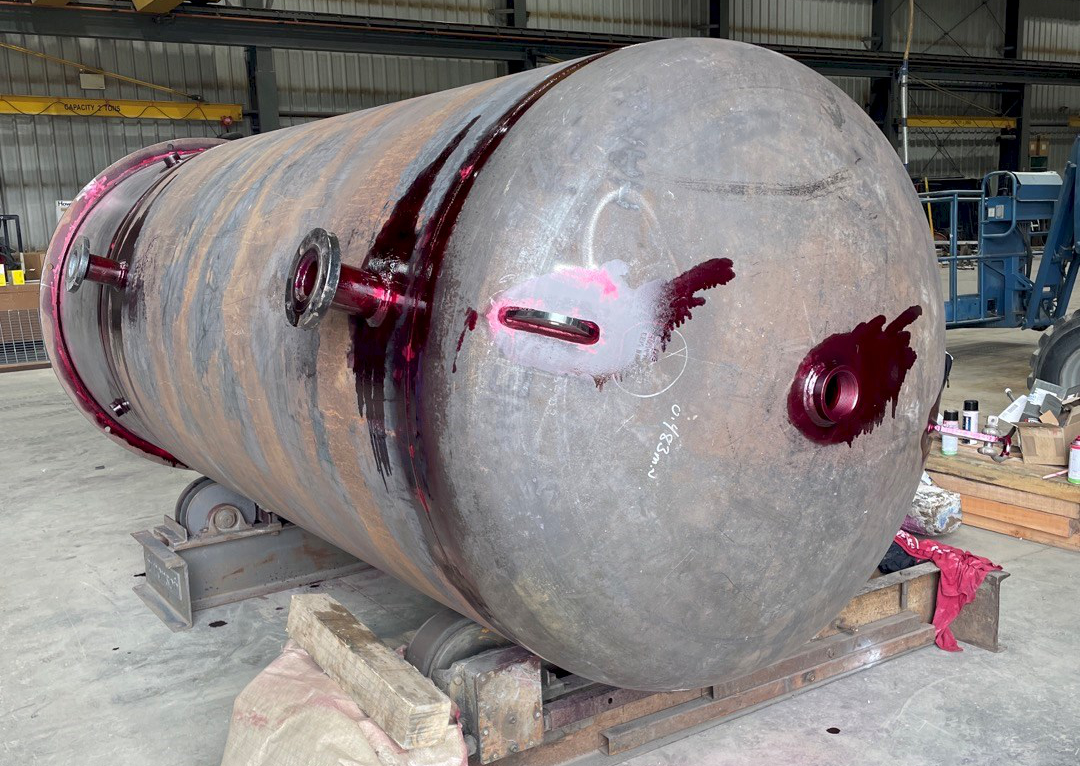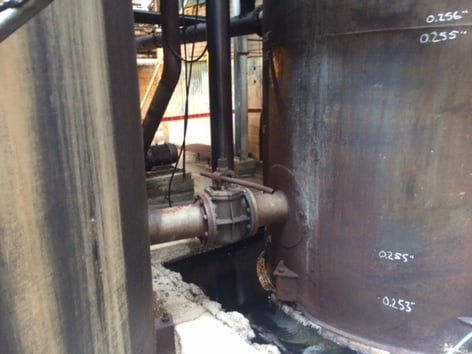Comprehensive Overview to Effective Container Welding Examination Techniques and Ideal Practices for Quality Control
In the world of storage tank welding, strenuous inspection methods are vital for safeguarding structural stability and making certain conformity with industry regulations. As we discover these essential parts, it becomes clear that an aggressive evaluation strategy is not just valuable, but crucial for functional success in settings dealing with dangerous products.
Importance of Storage Tank Welding Evaluation

Tank welding evaluation serves as a preventative step, identifying possible defects such as splits, porosity, or improper joint infiltration prior to they rise into severe problems. Regular assessments not only comply with sector policies and criteria yet additionally boost the longevity of the tanks, decreasing the need for costly fixings or substitutes.

Aesthetic Assessment Strategies
Using systematic aesthetic inspection strategies is crucial for assessing the top quality and integrity of bonded joints in storage tanks. This approach functions as the very first line of protection in identifying possible defects such as splits, damages, and not enough infiltration. The assessor must come close to the task with a keen eye, making use of suitable devices like magnifying glasses, flashlights, and mirrors to boost visibility.
Throughout the inspection process, the assessor should examine the weld account, ensuring it sticks to specified requirements and standards (Tank Welding Inspection). This includes taking a look at the grain width, height, and fusion with the base material. Inspectors should additionally pay very close attention to the bordering locations for indicators of thermal distortion or contamination that may impact the weld's efficiency
Documentation of findings is crucial; examiners need to tape-record any abnormalities, classifying them by severity for more assessment. This organized technique not just help in immediate flaw identification but additionally adds to lasting quality control by guaranteeing compliance with industry requirements. Normal training and calibration of aesthetic inspection techniques further enhance the integrity of assessments, ultimately causing safer and more sturdy container frameworks.
Non-Destructive Testing Approaches
Non-destructive testing (NDT) techniques are frequently used in storage tank welding assessments to analyze the stability of welded joints without compromising their architectural integrity. These techniques are essential for determining issues such as fractures, spaces, and additions that could cause devastating failings if left undiscovered.
Typical NDT methods include ultrasonic screening (UT), which utilizes high-frequency audio waves to identify inner defects; radiographic screening (RT), employing X-rays or gamma rays to visualize weld frameworks; and magnetic particle screening (MT), a fantastic read which reveals surface area and near-surface interruptions in ferromagnetic products (Tank Welding Inspection). Liquid penetrant testing (PT) is also commonly made use of, with the ability of identifying surface-breaking issues by applying a fluorescent or color contrast dye
Each NDT method has its specific applications and advantages, making it necessary for assessors to choose the appropriate method based on the material and the kind of weld being examined. The combination of these NDT approaches into the inspection procedure boosts the overall quality control framework, making certain that welded containers meet safety and efficiency criteria. Inevitably, NDT plays a crucial role in keeping the stability and durability of storage tank structures in various commercial applications.

Paperwork and Coverage
Ensuring thorough documents and reporting throughout storage tank welding inspections is vital for preserving compliance with industry criteria and promoting effective communication among stakeholders. Proper documents works as a comprehensive record of examination activities, searchings for, and any rehabilitative actions taken throughout the welding procedure. This info is necessary not only for quality control but also for audits and regulatory reviews.

A well-structured evaluation report ought to consist of information such as the date of evaluation, names of inspectors, welding treatments used, products made use of, and any kind of deviations from established standards. Additionally, pictures and representations can enhance the quality of the record, offering aesthetic context to the findings. It is also vital to record any type of non-conformities in addition to their resolution, ensuring that all stakeholders are notified of possible threats and the steps taken to reduce them.
In addition, maintaining a centralized data source for all evaluation records permits for very easy retrieval and testimonial, cultivating a culture of transparency and responsibility. By focusing on thorough documents and coverage, organizations can not just promote quality control yet additionally reinforce their online reputation within the sector, eventually bring about enhanced safety and operational efficiency.
Constant Improvement Practices
Continual improvement practices are important for improving the high quality and efficiency of tank welding examinations. One effective technique involves routine training and upskilling of assessment employees to remain abreast of the most current welding innovations and additional reading criteria.
Furthermore, utilizing data-driven evaluation allows organizations to track inspection outcomes, recognize trends, and pinpoint locations for improvement. Using tools such as root reason analysis can assist in recognizing the underlying problems causing problems, enabling targeted interventions. In addition, obtaining responses from evaluation teams and stakeholders develops a joint setting that urges cutting-edge solutions.
Integrating advanced technologies, such as automatic inspection systems and real-time surveillance, can considerably improve the accuracy and speed of examinations. visit this page Routine audits of the assessment procedures likewise add to a culture of responsibility and continuous improvement. Eventually, these continual renovation methods not only elevate the high quality of container welding examinations however likewise add to general functional quality and customer satisfaction.
Conclusion
In verdict, reliable container welding assessment is essential for making certain the structural stability and safety of storage space systems, specifically those handling hazardous materials. Utilizing a mix of visual evaluation methods and non-destructive testing techniques promotes the early identification of problems, consequently maintaining conformity with industry standards.
Comments on “How Tank Welding Inspection Avoids Future Structural Failings”